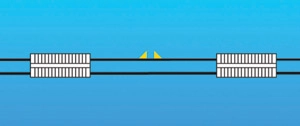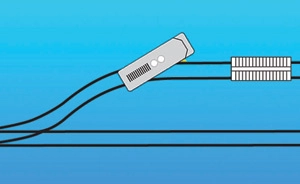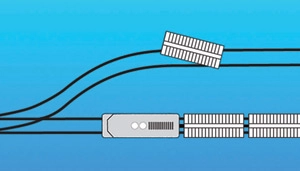Derails: Important Information
How Derails Work
The derail lifts the flange of the wheel and drops it clear of the rail. At the same time the wheel on the other rail falls down between the rails. The derailed wheels bite into the soft surface of ties and ballast and slide to a stop.
Depending on speed, a derailed car or locomotive may travel some distance before stopping.
Effective derailing depends on
- Derail properly sized, installed, and maintained
- Cars and locomotives moving at slow switching speeds (less than 5 mph)
- Flat track — no grades
- Track open to the ties and ballast
- In curved track, derail installed on outer rail, not inner rail
- Ample open space along track for derailed car or locomotive to come to a stop
Derails help prevent:

One car rolling into another

Unauthorized locomotive coupling to stationary car

A loose car rolling out onto the mainline
